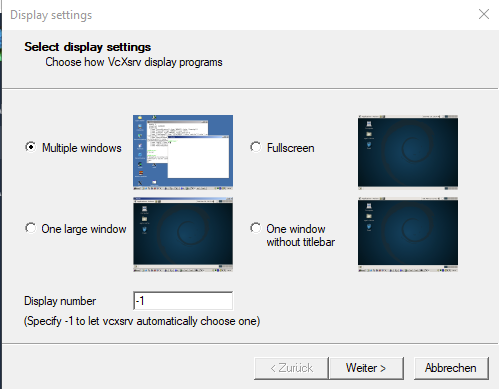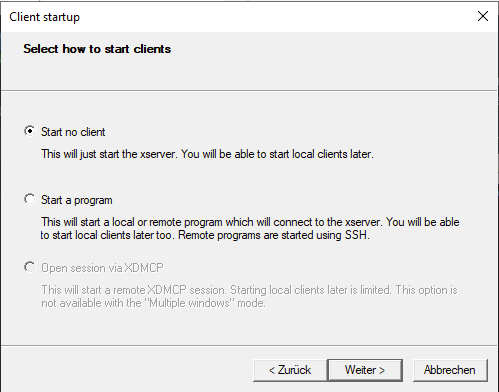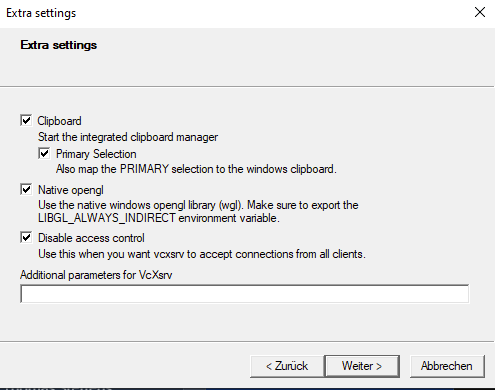- Created by John Hartfiel, last modified on 03 03, 2021
You are viewing an old version of this page. View the current version.
Compare with Current View Page History
« Previous Version 25 Next »
Beta Version description page is under construction
- Enable CPU virtualisation in BIOS
- Open Windows Features
- Enable Windows-Subsystem for Linux
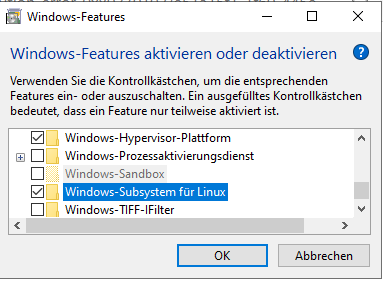
- Powershell as Admin:
- dism.exe /online /enable-feature /featurename:Microsoft-Windows-Subsystem-Linux /all /norestart
- dism.exe /online /enable-feature /featurename:VirtualMachinePlatform /all /norestart
- Reboot
- Download and install: https://wslstorestorage.blob.core.windows.net/wslblob/wsl_update_x64.msi
- Powershell as Admin:
- wsl --set-default-version 2
- Download Linux Distribution:https://docs.microsoft.com/de-de/windows/wsl/install-manual
- Install Vivado/Vitis/Petalinux supported Linux OS ( "Ubuntu 18.04 LTS" for 2020.2)
- Open Powershell as Admin
- Add-AppxPackage <download path>\Ubuntu_1804.2019.522.0_x64.appx
- Start Linux console and follow install instruction
- Start Ubuntu App (Windows Start Button → Ubuntu)
- (optional) WSL Configuration on linux console:
- sudo vim /etc/wsl.conf
[wsl2]
memory=<size>GB
processors=<cnt>
- Other options: https://docs.microsoft.com/en-us/windows/wsl/wsl-config
- sudo vim /etc/wsl.conf
- Linux console:
- sudo vim /etc/wsl.conf
- [network]
generateResolvConf = false
- [network]
- sudo vim /etc/wsl.conf
- Powershell console:
- wsl --shutdown
- Get DNS Server IP over powershell:
- ipconfig -all
- Restart Linux (over powershell or win start button → Ubuntu)
- Linux console:
- sudo vim /etc/resolv.conf
- nameserver <DNS IP>
- (in case file can't be wrote):
- sudo rm /etc/.resolv.conf.swp
- sudo vim /etc/resolv.conf
- Install VcXsrv
- Start VcXrvc (XLaunch)
- Linux console:
- sudo apt update && sudo apt upgrade
- sudo apt install xfce4
sudo apt install build-essential
sudo apt install net-tools
- sudo apt install xrdp -y && sudo systemctl enable xrdp
Linux console:
export DISPLAY=<host IP>:0.0
export LIBGL_ALWAYS_INDIRECT=1
- (optional) Add environment to auto start of new console :
- sudo vim /etc/bash.bashrc
export DISPLAY=<host IP>:0.0
export LIBGL_ALWAYS_INDIRECT=1
- sudo /etc/init.d/dbus start
- sudo /etc/init.d/xrdp start
- Start Ubuntu App (Windows Start Button → Ubuntu)
- Add username and password
- Update packet manager:
- sudo apt update && sudo apt upgrade
- Install:
- sudo apt install xfce4 xrdp
- Modify Remote Port
- sudo sed -i 's/3389/3388/g' /etc/xrdp/xrdp.ini
- Start XRDP Server
- sudo /etc/init.d/xrdp start
- (optional) XRDP autostart :
- sudo vim /etc/bash.bashrc
- sudo /etc/init.d/xrdp start
- sudo vim /etc/bash.bashrc
- Connect via RDP(Win10 Remote Desktop Connection):
- localhost:3388
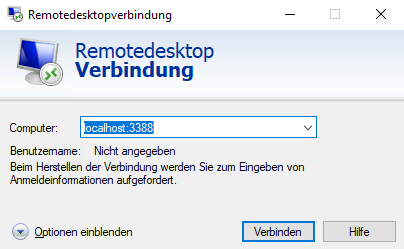
- localhost:3388
- Open explore
- Right click on PC icon --> Connect network drive
- Select drive
- Add to folder \\wsl$\Ubuntu-18.04
- Click Finish
- Install browser
sudo apt-get install firefox
change console from dash to bash
sudo dpkg-reconfigure dash
- Press "No" to disable dash and activate default bash
Enable i386 architecture
sudo dpkg --add-architecture i386
sudo apt-get update
Download and run plnx-env-setup.sh: https://www.xilinx.com/support/answers/73296.html
sudo ./plnx-env-setup.sh
Install(in case script did not install all)
sudo apt-get install iproute2 gawk python3 python build-essential gcc git make net-tools libncurses5-dev tftpd zlib1g-dev libssl-dev flex bison libselinux1 gnupg wget git diffstat chrpath socat xterm autoconf libtool tar unzip texinfo zlib1g-dev gcc-multilib automake zlib1g:i386 screen pax gzip cpio python3-pip python3-pexpect xz-utils debianutils iputils-ping python3-git python3-jinja2 libegl1-mesa libsdl1.2-dev pylint3 -y
- Download Xilinx Vitis All OS installer Single-File(Includes Vitis, Vivado and Petalinux downloader):
- Extracted Files on linux drive
- tar -xvf Xilinx_Unified_2020.2_1118_1232.tar.gz
- Create Folder /tools/Xilinx
- sudo mkdir /tools
- sudo mkdir /tools/Xilinx
- sudo mkdir /tools
- Change owner to user
sudo chown <owner>:<owner> /tools/Xilinx
Install Vitis
run xsetup
- select Vitis on default installation path
- Vivado License
- Open Xilinx License manager and chose Copy License and select your license file
- In case license file is node-locked and shared with WinOS:
- sudo vim /etc/bash.bashrc
- sudo ip link set dev bond0 address xx:xx:xx:xx:xx:xx
- (use MAC from Win OS)
- sudo ip link set dev bond0 address xx:xx:xx:xx:xx:xx
- sudo vim /etc/bash.bashrc
- Install petalinux
- run xsetup
- select petalinux on default installation path
- Add source environment to auto start of new console :
- sudo vim /etc/bash.bashrc
- source /tools/Xilinx/PetaLinux/2020.2/tool/settings.sh
- sudo vim /etc/bash.bashrc
#...
#(original part)
#...
#all extensions to setup environment and
# load petalinux environment
source /tools/Xilinx/PetaLinux/2020.2/tool/settings.sh
# additional TE environment variables to change timeout and used jobs
export TE_TIMEOUT=200
export TE_RUNNING_JOBS=6
# finish
function x_run () {
#XServer Display
export DISPLAY=xxx.xxx.xxx.xxx:0.0
# replace xxx.xxx.xxx.xxx with your win 10 host IP
export LIBGL_ALWAYS_INDIRECT=1
sudo /etc/init.d/dbus start
sudo /etc/init.d/xrdp start
# replace xx:xx:xx:xx:xx:xx with win 10 MAC
sudo ip link set dev bond0 address xx:xx:xx:xx:xx:xx
}
# x-server Setup only needed in case wsl is rebooted
echo "Refresh XSetup? y/N"
read xsetup
if [ "${xsetup}" == "y" ]; then x_run; fi
#Sometimes Vmmem did not release DDR memory # ############### #Solution 1: # ####### #shutdown (close all running application before) wsl --shutdown #start WSL again wsl #Solution 2: #todo
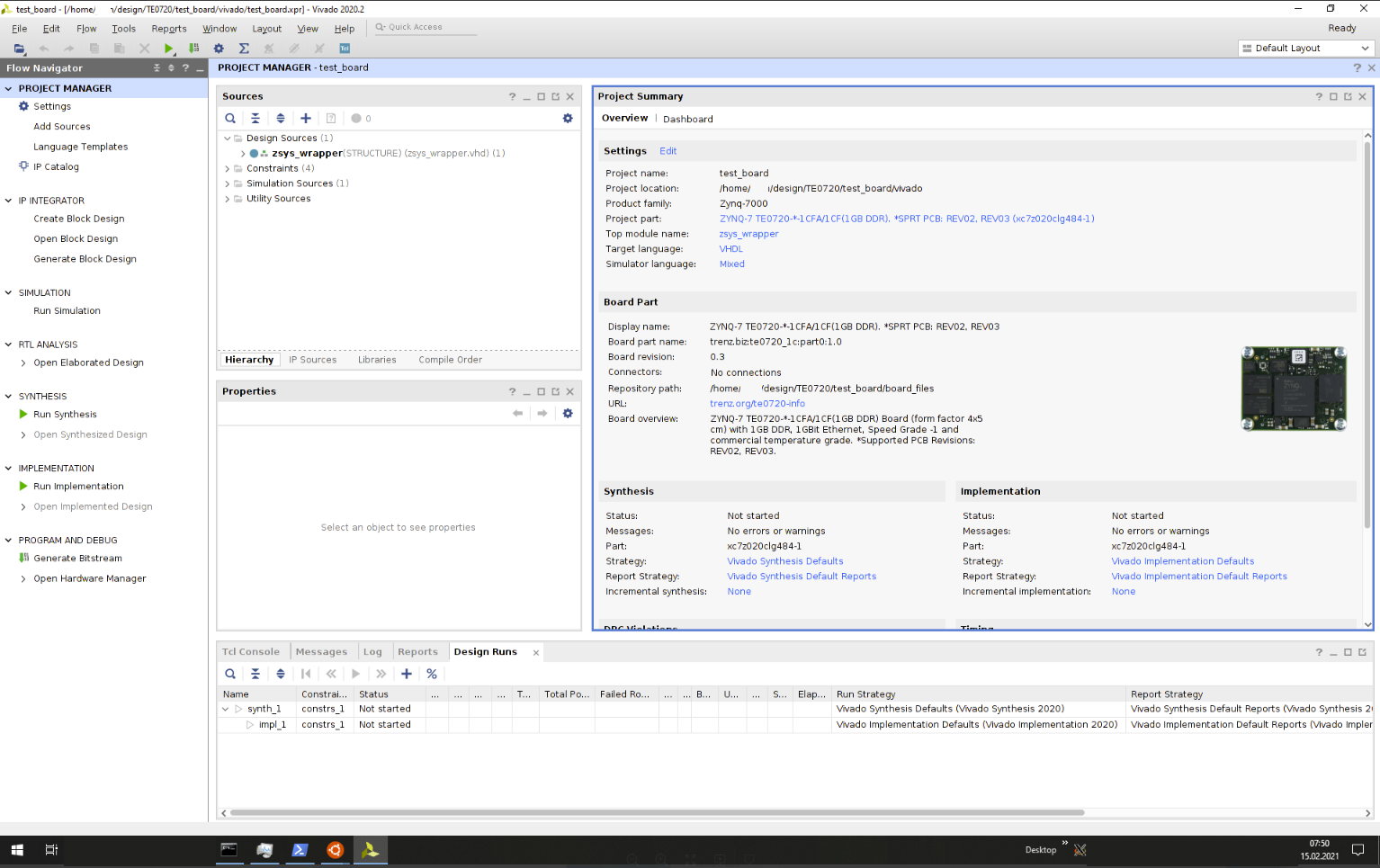
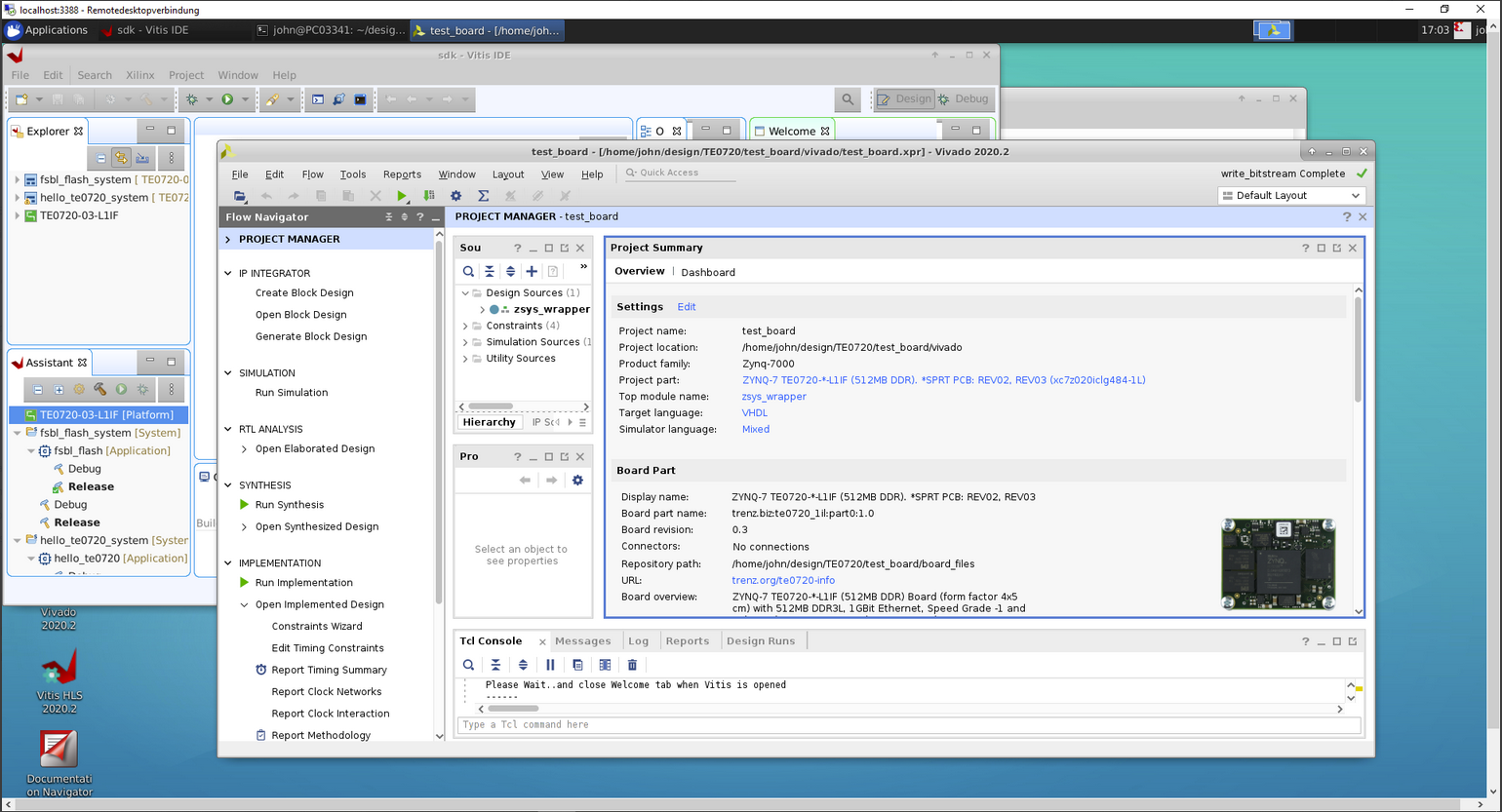
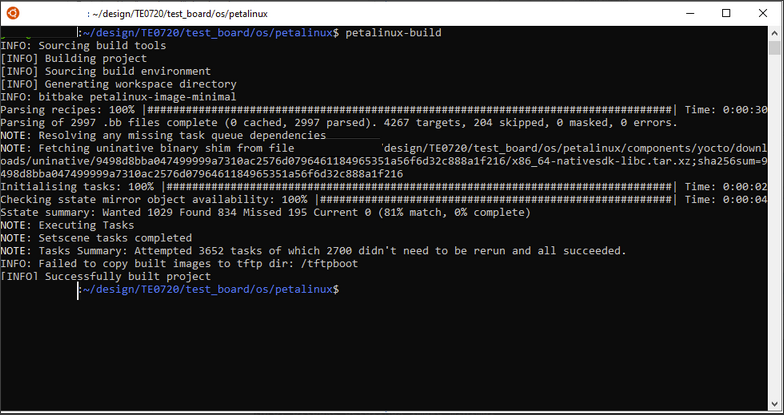
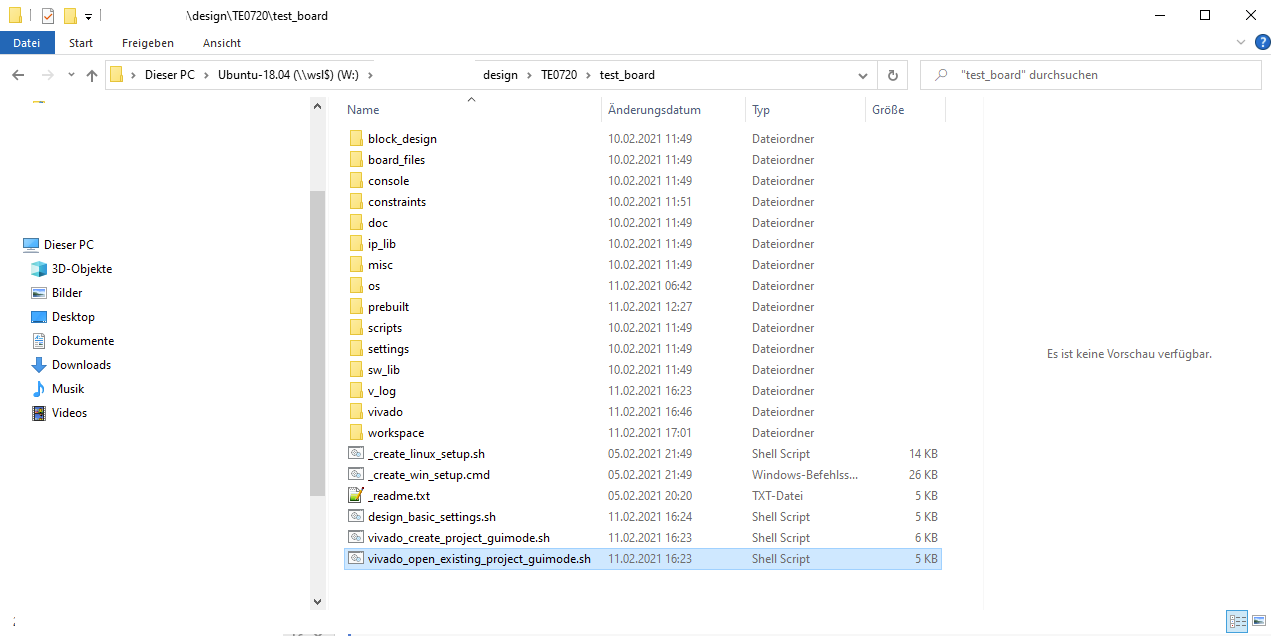
- No labels
